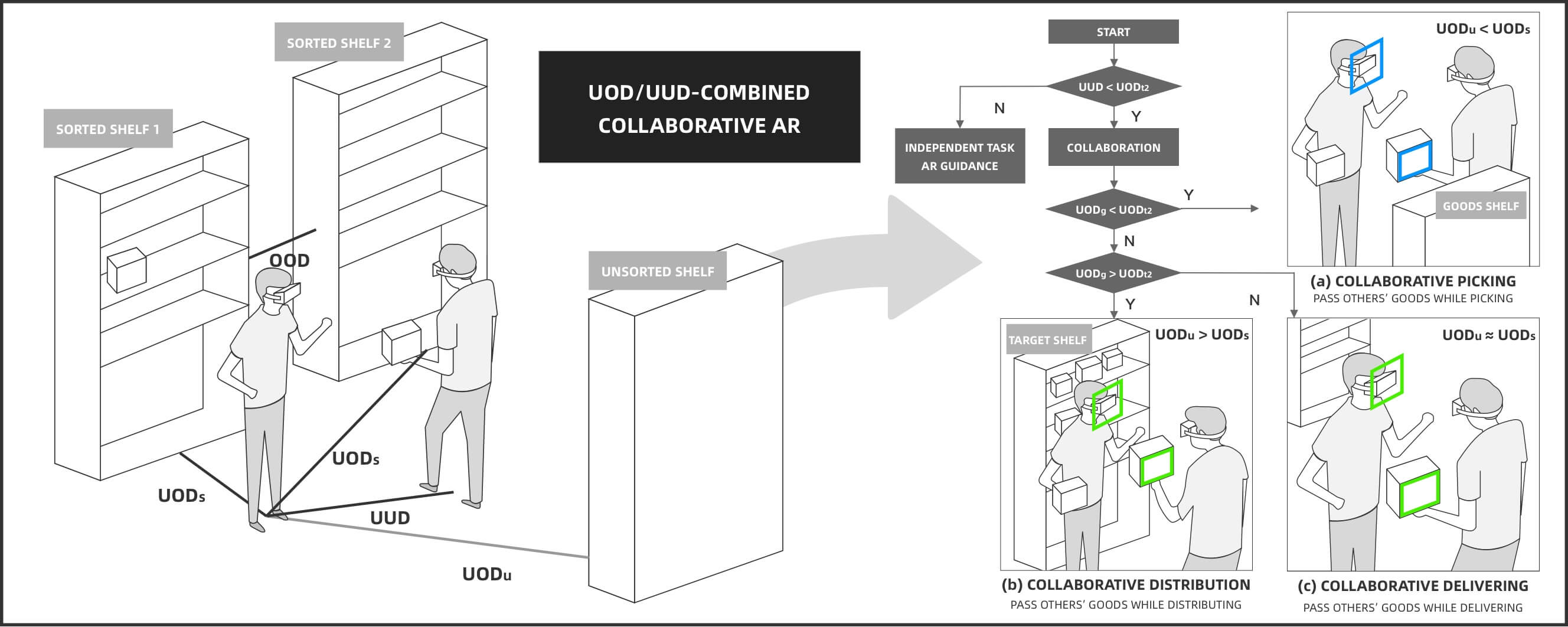 Open Access
Open Access
ARTICLE
UOUU: User-Object Distance and User-User Distance Combined Method for Collaboration Task
College of Computer Science and Technology, Zhejiang University, Hangzhou, 310000, China
* Corresponding Author: Pengfei Wang. Email:
(This article belongs to the Special Issue: Recent Advances in Virtual Reality)
Computer Modeling in Engineering & Sciences 2023, 136(3), 3213-3238. https://doi.org/10.32604/cmes.2023.023895
Received 17 May 2022; Accepted 21 November 2022; Issue published 09 March 2023
Abstract
Augmented reality superimposes digital information onto objects in the physical world and enables multi-user collaboration. Despite that previous proxemic interaction research has explored many applications of user-object distance and user-user distance in an augmented reality context, respectively, and combining both types of distance can improve the efficiency of users’ perception and interaction with task objects and collaborators by providing users with insight into spatial relations of user-task object and user-user, less is concerned about how the two types of distances can be simultaneously adopted to assist collaboration tasks across multi-users. To fulfill the gap, we present UOUU, the user-object distance and user-user distance combined method for dynamically assigning tasks across users. We conducted empirical studies to investigate how the method affected user collaboration tasks in terms of collaboration occurrence and overall task efficiency. The results show that the method significantly improves the speed and accuracy of the collaboration tasks as well as the frequencies of collaboration occurrences. The study also confirms the method’s effects on stimulating collaboration activities, as the UOUU method has effectively reduced the participants’ perceived workload and the overall moving distances during the tasks. Implications for generalising the use of the method are discussed.Graphic Abstract

Keywords
Cite This Article
 Copyright © 2023 The Author(s). Published by Tech Science Press.
Copyright © 2023 The Author(s). Published by Tech Science Press.This work is licensed under a Creative Commons Attribution 4.0 International License , which permits unrestricted use, distribution, and reproduction in any medium, provided the original work is properly cited.


 Submit a Paper
Submit a Paper Propose a Special lssue
Propose a Special lssue View Full Text
View Full Text Download PDF
Download PDF Downloads
Downloads
 Citation Tools
Citation Tools